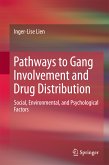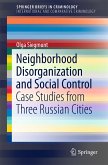This unique volume explores why and how youth join and leave gangs, as a lens for
exploring intervention and prevention through comparative, international research.
The book explores three key questions: how do youth gangs form and how do they
change over time? Why do youth join street gangs, and why do they leave? How can we
use this knowledge to foster more effective interventions for gang problems?
Drawing from research conducted in ten different countries (Belgium,
Canada, Germany, Israel, the Netherlands, Norway, Sweden, the United Kingdom, the
United States of America, and Venezuela) and a variety of disciplines, sixteen original chapters provide unique insights into:
1) patterns of gang participation and how it impacts individual behavior
2) individual transitions and their impact on gang transformations
3) fostering gang transition and transformation
This work will be of interest to researchers in Criminology and Criminal Justice,
particularly with an interest in youth gangs, developmental and life-course criminology,
criminal careers, and criminal networks, as well as related fields such as sociology,
psychology, and comparative law, and public health.
Dieser Download kann aus rechtlichen Gründen nur mit Rechnungsadresse in A, B, BG, CY, CZ, D, DK, EW, E, FIN, F, GR, HR, H, IRL, I, LT, L, LR, M, NL, PL, P, R, S, SLO, SK ausgeliefert werden.









